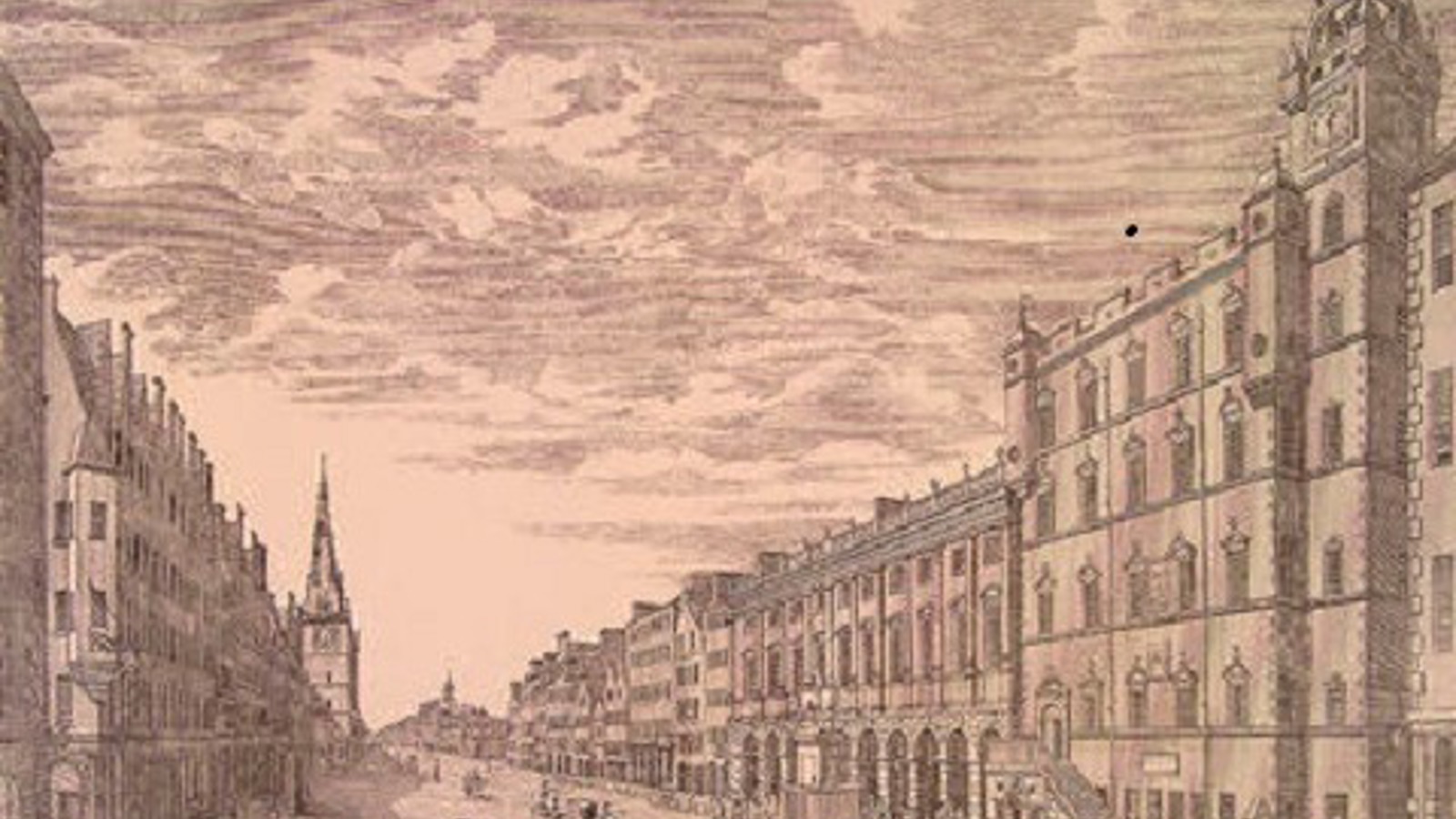Ask the Archivist - City Chambers
Our next topic was one of Glasgow's most iconic buildings: the City Chambers! The Q&A is below. You can also read a feature about these records in the Glasgow Times.
Q1: Where were the earliest Council Chambers?
Glasgow was a Bishop’s and not a Royal burgh when it was founded in 1175. It was the bishops who were responsible for administering the burgh, but by the 15th century there were clear signs of the development of a burgh constitution. While the first meeting place of the Town Council may have been in the Bishop’s Castle, there was a Tolbooth from at least 1454 (and probably a previous one) which was provided for the municipal administration of the burgh. Nothing is known of the appearance of the building and it can only be supposed that it stood on the site of the later Tolbooth.
Q2: When was the new Tolbooth built?
In 1625 the old Tolbooth was ruinous and arrangements were made to have it replaced. In 1626 and the building was taken down and replaced by a more modern structure on the same site. Only the steeple now remains. While the 3rd Tolbooth was being erected the Council held their meetings in the Tron Kirk. The Tolbooth was found to be too small for the meetings and ground was acquired for the erection of a council chamber, municipal offices and assembly rooms.
Q3: Why did the Council move so often in the 19th century?
During the 19th century the Council Chambers moved several times as their accommodation failed to meet its rapidly increasing requirements: firstly to Jail Square in 1814, (now known as Justiciary Buildings), then to the City and County Buildings, Wilson St (1844) and finally to Ingram St in 1874.
Q4: What did the city do to mark its new Council Chambers?
A public holiday was declared on 6 October 1883 and 600,000 people watched a trades’ march of skilled workers from the city’s heavy industries and a masonic procession. The foundation stone of the new municipal buildings, was laid by Lord Provost John Ure with due pomp and ceremony. Later, in August 1888, the topmost stone - the apex of the central tower - was laid and Queen Victoria performed the inauguration ceremony as part of a huge public ceremony. In 1889 a ten-day public viewing attracted 400,000 people.
Q5: Who designed the current City Chambers?
Two competitions were held to design the new building. William Young was the winner of the second of these, which attracted 125 entries. He was a London based architect, born in Paisley and trained in Glasgow. Many artists contributed to the splendour of the City Chambers. The murals on the walls of the Banqueting Hall were painted by artists from the famous Glasgow School.
Q6: What does the pediment above the main entrance to the City Chambers show?
The original proposal was to illustrate the Clyde and the city’s manufacturing going to all parts of the world. To mark the Queen’s jubilee (1887) the design was changed and shows Queen Victoria enthroned and surrounded by figures of Scotland, Ireland and Wales receiving homage and congratulations of her subjects from all parts of the world. Above the pediment are statues representing Truth, Riches and Honour. At the very top, Truth is known by some as Glasgow’s Statue of Liberty because it bears more than a passing resemblance to the famous lady.
Q7: What are some of the special features inside the City Chambers?
The City Chambers is western Europe’s largest marble staircase, built using Carrara marble imported from Italy. It is credited with having more marble than the Vatican. The Banqueting Hall includes murals by several famous “Glasgow Boys” artists depicting Glasgow’s past, present and future. These are lit by huge electric chandeliers, which are winched down annually for cleaning. The Satinwood Room is finished with Australian satinwood.

